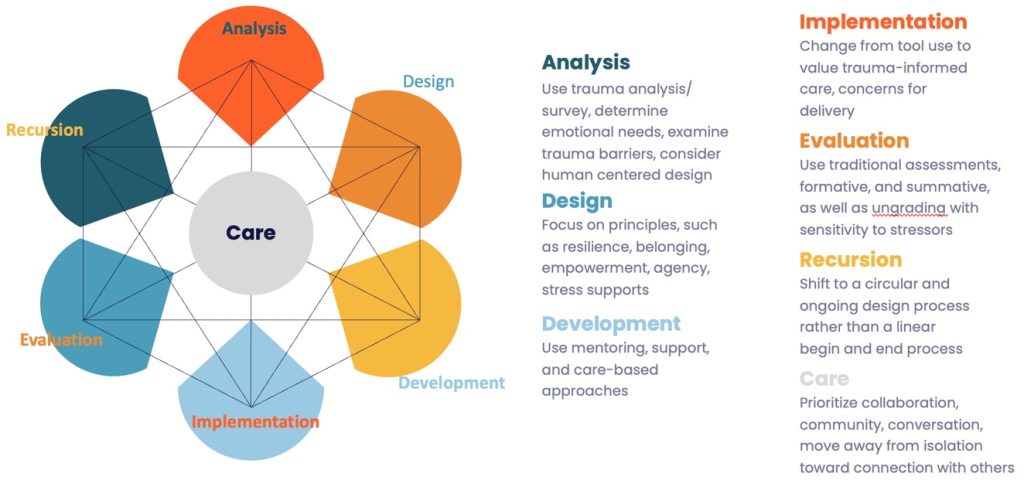by MU Instructional Designers
Reviewed September 17, 2025
4-6 min read
The term “ADDIE model” (or “ADDIE process”) is widely used to describe the stages of all instructional design models. It is “an acronym referring to the major stages in the generic ISD [instructional systems development] process.”1 These stages are described in the short video below:
These five steps provide the framework for developing and improving a course over time. Each step provides critical information for the next step.
- Analyze – Based on your course’s learning objectives as well as the strengths and needs of your learners, identify the knowledge and/or skills that your students need to learn.
- Design – Plan out the assessments and content needed for your students to achieve the goals/objectives.
- Develop – Create the content and assessments for your course.
- Implement – Facilitate the content and assessments in your course.
- Evaluate – Review feedback and take time to reflect on how the course went. Were there areas where students struggled? Do you need more scaffolding in some areas? Did your assessments accurately measure your objectives? What changes do you need to make before the course runs again?
ADDIE + UDL
This instructional design process aligns well with the principles of Universal Design for Learning (UDL). At each stage of ADDIE, you need to keep in mind the diversity of your learners’ affective, recognition, and strategic brain networks. Jodie Black and Eric J. Moore (2019) have developed specific questions for each stage to help you consider that diversity while planning: ADDIE Model Module Plan Worksheet.
Trauma-Informed ADDIE
Educators are now more than ever aware of the role student mental health plays in the learning process. Multiple factors outside the classroom can impact a student’s ability to engage with course content and/or peers. To address this, the ADDIE model has been expanded to include a trauma-informed approach, placing student care at the core of the development process. This graphic from the Educause article “TI-ADDIE: A Trauma-Informed Model of Instructional Design” provides a quick snapshot of how this information can be integrated into the design process.
